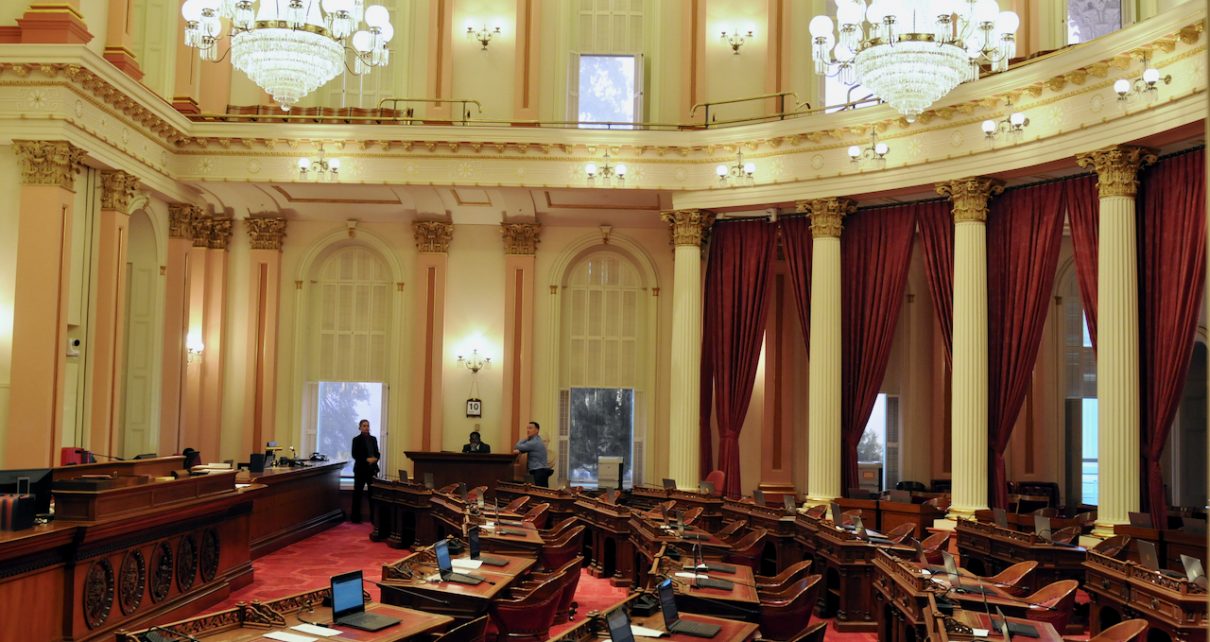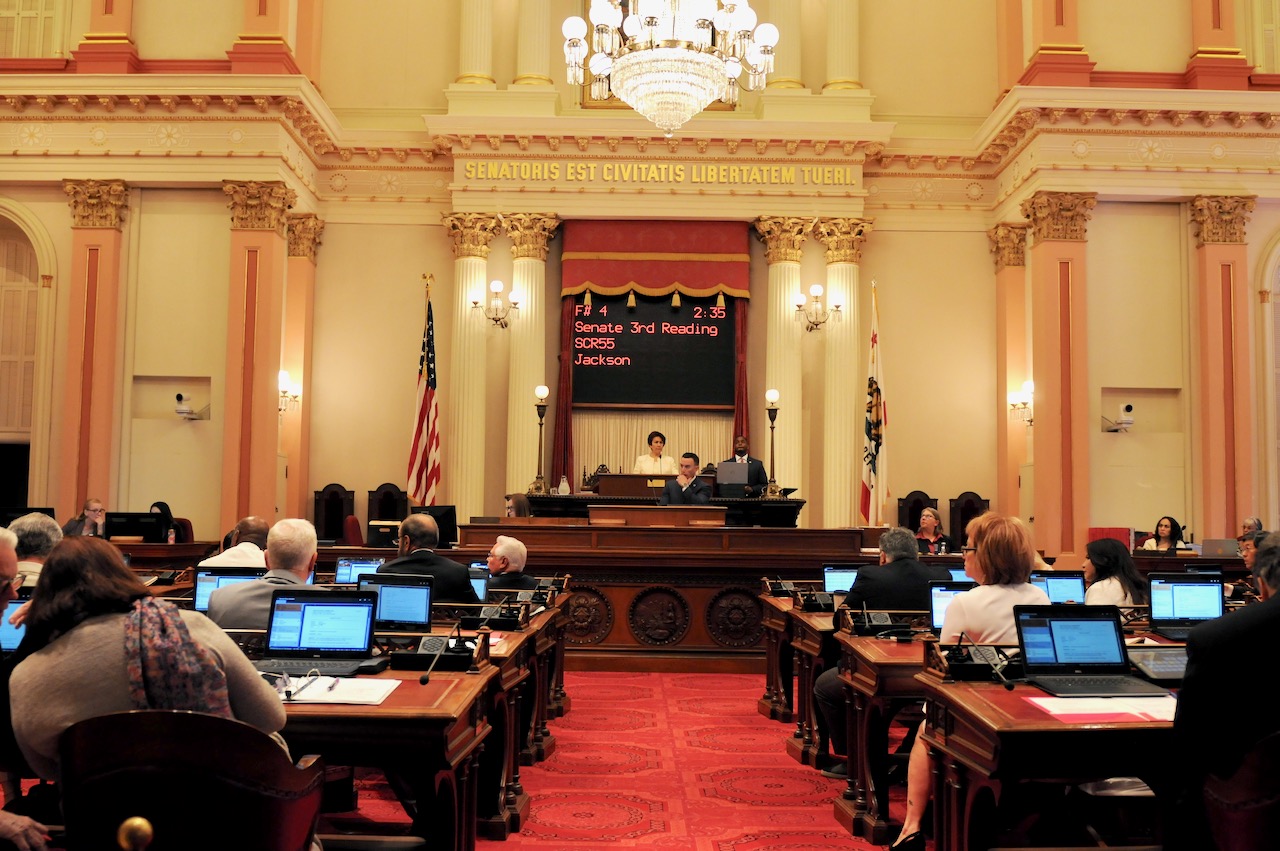
California Senate Chambers. (Photo: Kevin Sanders for California Globe)
Drafting Sunset Clauses in California Legislation
Sunset dates are common in legislation across the country
By Chris Micheli, October 31, 2022 3:33 pm
Sunset dates are common in legislation across the country. The purpose is to repeal a law on a specified date. As a result, unless the Legislature enacts another bill to either extend or eliminate the sunset date, the law will expire, or “sunset,” on the date specified in the statute. Sunset dates often extend from one to three years, to as long as a decade.
These sunset or expiration clauses are generally used to allow the legislative branch to revisit a statute to check on how the law has been implemented by the executive branch. Sunset clauses are used primarily by the states, while Congress has only used them sparingly. The federal Patriot Act is often cited as an example of the federal government using a sunset provision.
There are other instances when the Legislature may want a statute to be temporary in application. For example, legislation that is viewed as an experiment or being tried for the first time. The Legislature may want to check on how the law has worked for a few years before making it permanent. In addition, sometimes controversial legislation may be established with a sunset date as a possible compromise. In other words, the Legislature may choose to give a contested bill an opportunity to prove itself.
A sunset clause may also be appropriate when a law is necessary to address a temporary situation or fulfill a short-term need, such as a state of emergency or a disruption in the economy. And, the Legislature may impose a sunset date to ensure that a review is triggered before the statute will be extended or made permanent.
In California, we usually see sunset or repeal clauses in one of these forms:
This section shall remain in effect only until December 1, 2020, and as of that date is repealed.
This section shall become inoperative on July 1, 2020, and, as of January 1, 2021, is repealed, unless a later enacted statute, that becomes operative on or before January 1, 2021, deletes or extends the dates on which it becomes inoperative and is repealed.”
A sunset date is always placed at the end of the code section or chapter being added. As a result, the bill drafter needs to ensure that the sunset clause correctly refers to “section” or “chapter.”
There are two methods to create a sunset date: Making the provision(s) inoperative or repealing them. What is the difference? Making a provision of law “inoperative” means that the law remains on the books. On the other hand, a repealed provision means that the provision of law is taken off the books entirely.
- Harbor Commissions in California - December 5, 2025
- Mediation Proceedings in Child Custody Cases - December 5, 2025
- Recent Legal Challenges to California Statutes - December 4, 2025





Should be MANDATORY boilerplate for ALL legislation…with a maximum lifespan and a default expiration date.